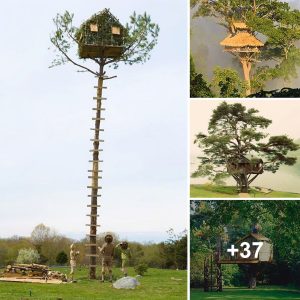In the enchanting realm of nature, there exist extraordinary trees that defy gravity with their inverted growth. These upside-down wonders, with their topsy-turvy branches and dangling roots, capture our imagination and beckon us into a world of botanical marvels. Join us on a journey to explore the captivating realm of inverted trees and delve into the intriguing stories they have to tell.

Gravity-Defying Growth: Inverted trees, also known as “strangler figs” or “upside-down trees,” possess a unique growth pattern that defies convention. Instead of growing upwards towards the sky, these remarkable trees begin their journey by dropping their aerial roots from the branches towards the ground. Over time, these roots grow thicker, enveloping the host tree and ultimately giving the impression of an upside-down tree.


Unusual Adaptations: The inverted growth of these trees serves as an ingenious adaptation strategy. By starting their growth from the top and wrapping around the host tree, they gain an advantage in accessing sunlight and nutrients. This survival strategy allows them to thrive in challenging environments and compete for resources in densely populated forests.

Striking Visuals: The sight of an inverted tree is truly mesmerizing. With their branches cascading downwards and their roots dangling from above, they create a surreal and captivating spectacle. The intricate interplay between the inverted tree and its host tree forms a mesmerizing tapestry of intertwined roots and branches, showcasing nature’s artistic prowess.

Ecosystem Importance: Upside-down trees play a crucial role in their ecosystems. Their unique growth pattern provides shelter and nesting opportunities for a variety of wildlife, including birds, insects, and small mammals. The hollowed-out trunks and tangled network of roots offer refuge, creating a mini-ecosystem within the tree itself. Additionally, the fruits of inverted trees provide nourishment for a range of animals, contributing to the overall biodiversity of the surrounding habitat.

Symbolic Significance: Beyond their ecological significance, inverted trees hold symbolic meaning in various cultures. They are often associated with resilience, adaptability, and the ability to find strength in unconventional ways. Their upside-down growth pattern serves as a metaphor for overcoming challenges and thriving in adverse circumstances, reminding us of the remarkable resilience of nature.





